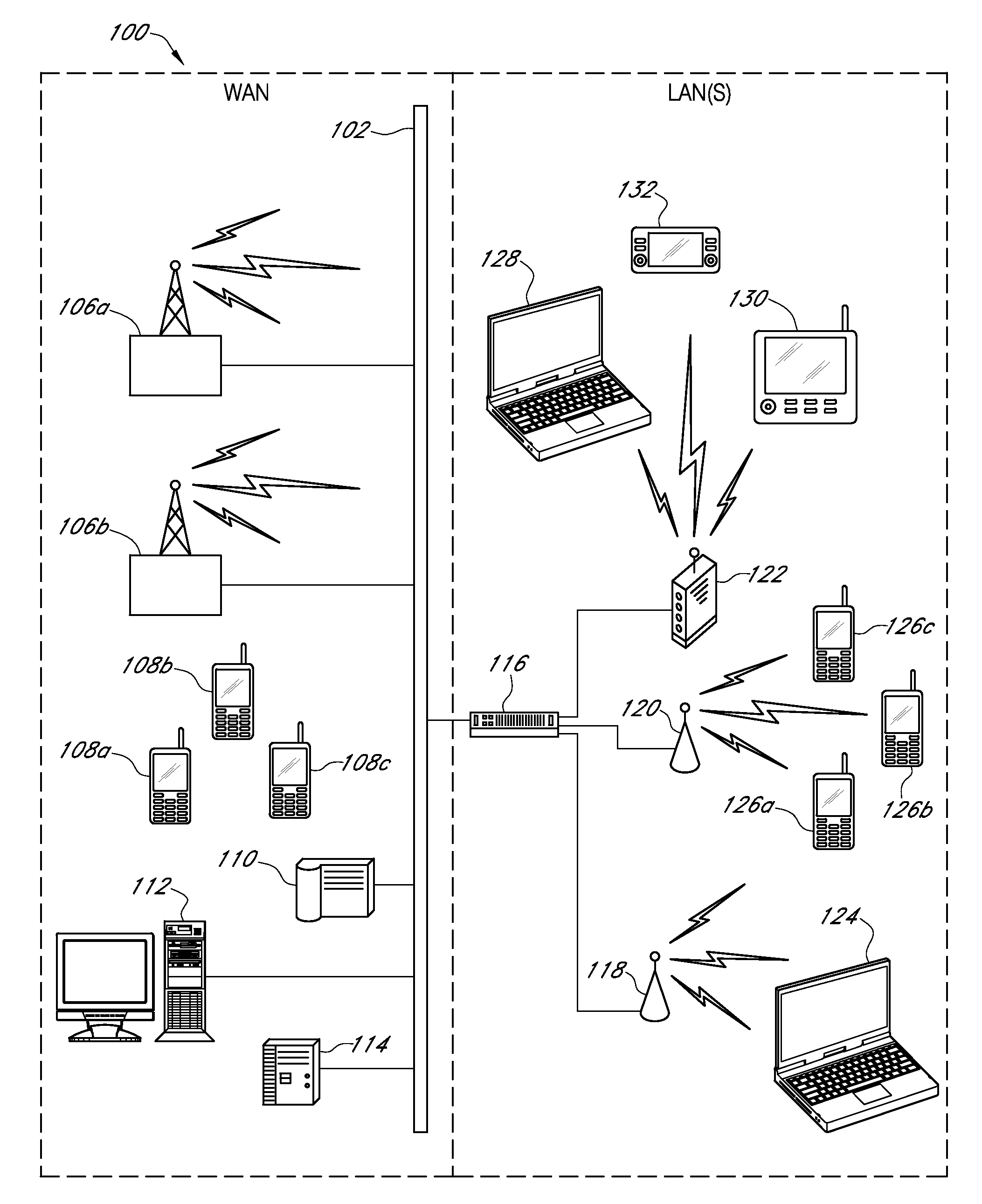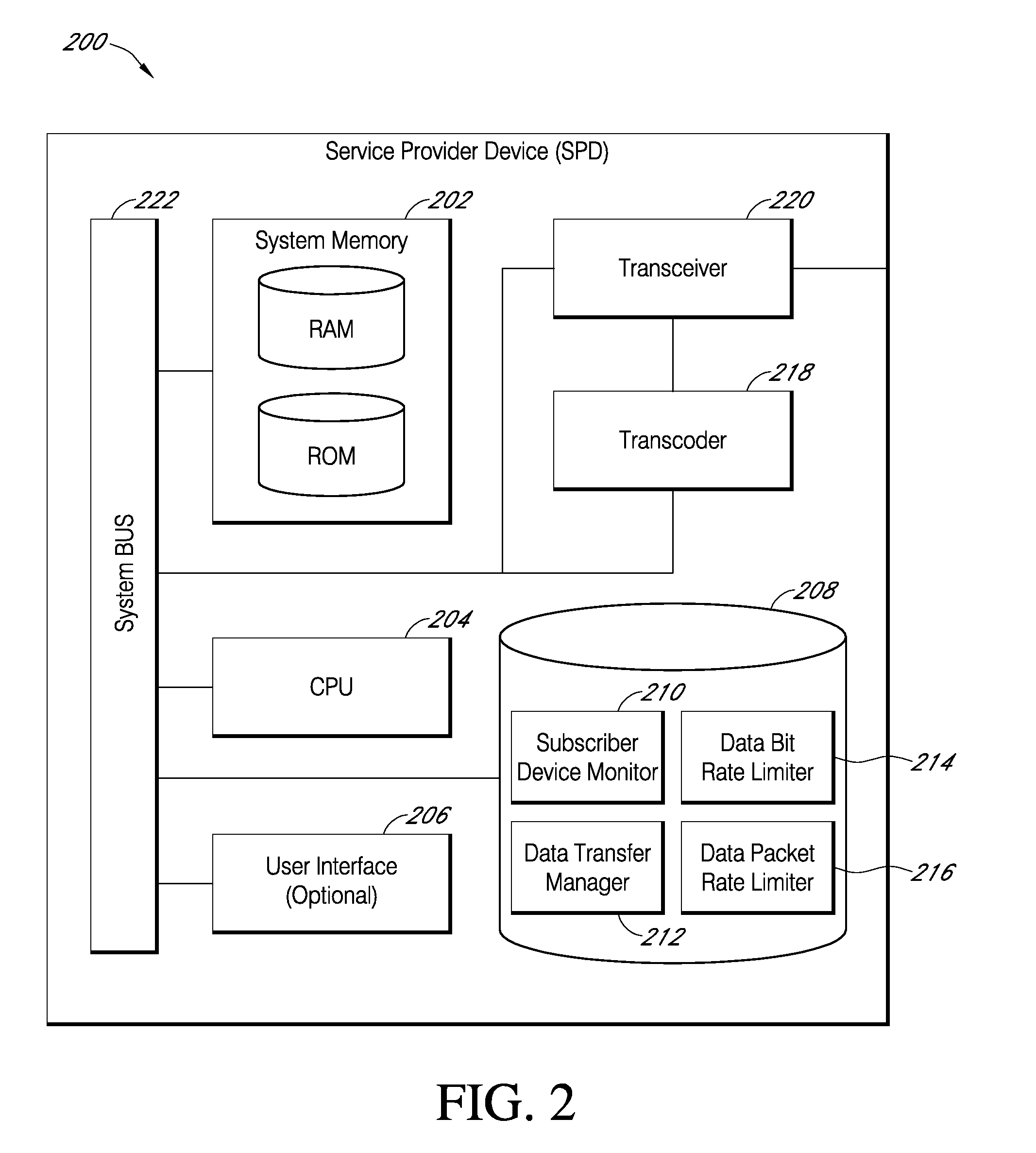Systems and methods for hybrid rate limiting based on data bit count and data packet count
a technology of hybrid rate limiting and data bit count, which is applied in the field of systems and methods for hybrid rate limiting based on data bit count and data packet count, can solve the problems of data being lost during transmission, transmitter or receiver device may not be able to process a stream of data that arrives too, and may be particularly detrimental to cellular data communication networks. to achieve the effect of facilitating rate limiting
- Summary
- Abstract
- Description
- Claims
- Application Information
AI Technical Summary
Benefits of technology
Problems solved by technology
Method used
Image
Examples
Embodiment Construction
[0041]In accordance with an exemplary embodiment of the present invention, FIG. 1 illustrates a networked computing system 100 including various wireline and wireless computing devices that may be utilized to implement any of the hybrid rate-limiting processes associated with various embodiments of the present invention. The specific network configuration shown in FIG. 1 is intended to give an example of a high-level computing system capable of facilitating various rate-limiting processes of the present invention. As would be understood by those skilled in the Art, many network configuration and topology changes could be made to the networked computing system 100 of FIG. 1, without departing from the spirit and scope of the present invention. The networked computing system 100 may include, but is not limited to, a group of service provider devices 110, 112, 114 and 116 (SPDs), including server computers (e.g., network controller devices) or any other common network device known in t...
PUM
 Login to View More
Login to View More Abstract
Description
Claims
Application Information
 Login to View More
Login to View More - R&D
- Intellectual Property
- Life Sciences
- Materials
- Tech Scout
- Unparalleled Data Quality
- Higher Quality Content
- 60% Fewer Hallucinations
Browse by: Latest US Patents, China's latest patents, Technical Efficacy Thesaurus, Application Domain, Technology Topic, Popular Technical Reports.
© 2025 PatSnap. All rights reserved.Legal|Privacy policy|Modern Slavery Act Transparency Statement|Sitemap|About US| Contact US: help@patsnap.com



